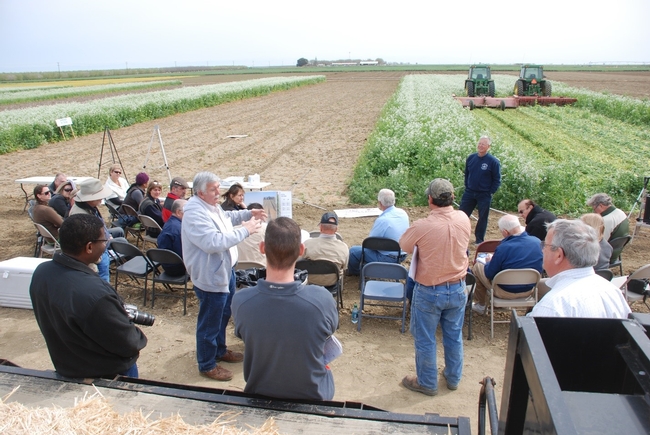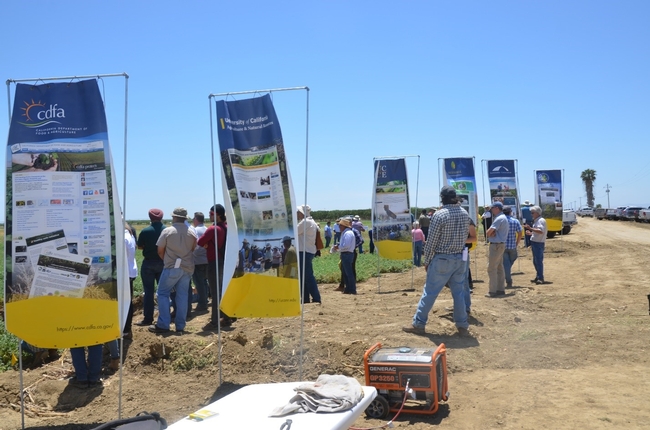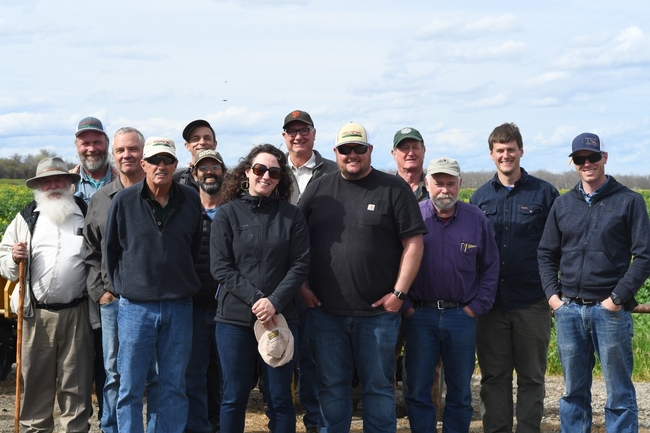Findings from a unique study site affirm the value of using the core soil health management principles of conservation agriculture to improve soil function, climate resilience, and increase the ecological sustainability of agriculture.
The Issue
California farmers overall recognize the theoretical benefits that might come from implementing basic soil health management principles, but they lack concrete information and experience on how to actually use these principles at their farms and they also are in general, not currently implementing them. In other words, despite the now widespread high visibility that soil health is receiving from government programs, actual adoption of the prescribed core principles of soil health management occurs on very little California crop acreage. Ongoing estimates of the UC ANR Conservation Agriculture Systems Innovation (CASI) Center indicate for example, that in CA's annual cropping systems very little reduced disturbance soil management is employed whatsoever and there is virtually zero production that occurs in high surface residue, “soil cover” conditions. Further, farmers lack detailed information to guide cost-benefit economic analyses of soil health management approaches.
How UC Delivers
In 1999, UC ANR established the long-term University of California Conservation Agriculture Systems Project at the West Side Research and Extension Center in Five Points, CA with a group of San Joaquin Valley farmers, the U.S. Department of Agriculture National Resources Conservation Service (USDA NRCS), private sector, and university partners to measure changes in soil and crop productivity with implementation of the key soil health management practices of cover cropping and no-tillage. The original intent was to investigate farming practices that would reduce particulate matter emissions and increase soil carbon relative to the historically high soil disturbance practices that had been used in the region for over 80 years. At that time, no till practices were used on less than 2% of annual crop acreage in the San Joaquin Valley and informal estimates indicated that the extent of cover cropping and high surface was at similar low levels of adoption. Based on this project and the multitude of public educational events that it has conducted for over 3,000 people since its inception, UC ANR organized a group of about 20 California farmers and private sector supporters who are now working together on a USDA NRCS Conservation Innovation Grant Program project aimed at increasing the adoption of reduced disturbance cropping systems at organic vegetable production farms.
After 20 years of consistent soil health management at the UC ANR study site involving reduced soil disturbance, surface residue generation and preservation, and the use of cover crops, overall soil function improved dramatically compared to standard practices. Our findings indicate that dedication to the now widely touted and highly visible principles of soil health in ways that are uncommon in current production systems in the region results in not only changes in several soil chemical, physical, and biological properties, but also in improvements in the ecological and environmental services that the soil provides. After 20 years, nitrogen in the top 3 ft of soil increased 10%, water holding capacity and carbon in surface layers of the soil increased 20 and 30%, respectively, while overall soil biodiversity also increased in functionally significant ways in the no-till with cover crop system relative to the standard till without cover crop approach. Importantly, the period of the year with “green cover” of over the soil also increased by 3 months by the no-till cover crop system and dust emissions were generally reduced by more than 70% by the reduced disturbance systems.
The Impact
This group of 20 farmers are now taking advantage of the findings of the unique UC ANR long-term work at their own farms and are enthusiastically sharing information about their own efforts at reduced disturbance approaches. Farmers have made structural changes to their practices such as reducing disturbance, increasing residue cover, cover cropping, and reducing tillage intensity. These changes have the potential to preserve natural resources and reduce pollution as described in the research findings above.
This study and the changes in practice align with new government focuses on soil health. Reliance on ecosystem services that result from healthy, functioning soils rather than the synthetic, non-renewable inputs and high disturbance practice is increasingly seen as a publicly desirable and environmentally sustainable way to improve our food production systems. Because preventing further degradation of soil function and productivity is often less expensive than remediation, the common good costs of achieving such sustained ecosystem improvement rightly need to be borne by our food system at large, rather than farmers themselves.
In this way, UC ANR contributes to increasing ecological sustainability of agriculture and the public value of protecting California's natural resources by evaluating alternative management approaches and determining tradeoffs that might be associated with their implementation.
Our findings from a unique study site in one of the historically most productive agricultural regions of the world clearly affirm the value of using the core soil health management principles of conservation agriculture to improve soil function, climate resilience, and climate change mitigation.


